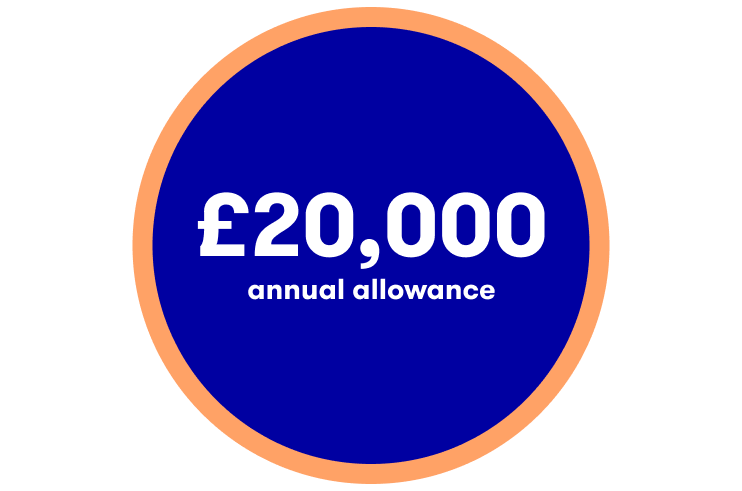The Isa allowance for the tax year 2024-25 has been announced, with new limits and regulations in place to govern how much individuals can save tax-free in their Individual Savings Accounts. The annual allowance for this period has been set at £20,000, allowing individuals to invest up to this amount without incurring any tax on their returns. Additionally, there are restrictions on transferring funds between different types of Isas, with a limit of £4,000 for transfers from a Lifetime Isa to another type of Isa.
These regulations aim to ensure that individuals are using their Isa allowances in a way that maximizes their tax benefits while also preventing any potential misuse of the system. It is important for investors to be aware of these limits and regulations to avoid any penalties or complications when managing their Isa investments.
Understanding Isa Allowance
The Individual Savings Account (ISA) allowance is an important concept for those looking to save money tax-efficiently. Essentially, an ISA is a type of savings or investment account that allows individuals to earn interest or returns on their money without having to pay tax on those earnings.
The ISA allowance refers to the maximum amount of money that an individual can deposit into an ISA in a given tax year. For the current tax year, the ISA allowance is £20,000. This means that individuals can deposit up to £20,000 into their ISAs without having to pay tax on any interest or returns earned on that money. It’s important to note that any amount deposited into an ISA counts towards the annual allowance, whether it is in a cash ISA, stocks and shares ISA, or innovative finance ISA.
Additionally, any unused allowance does not roll over to the next tax year, so it’s important to take advantage of it before the end of the tax year. Understanding the ISA allowance can help individuals make the most of their savings and investments while minimizing their tax liability. By staying within the annual limit and utilizing the tax advantages of ISAs, individuals can potentially grow their wealth more efficiently over time.
Your Isa Allowance for 2024-25
For the 2024-25 tax year, the Isa allowance remains at £20,000 per person. This means that individuals can invest up to this amount in their Isa accounts without having to pay any tax on the returns they earn. It is important to note that any unused allowance does not roll over to the next tax year, so it is advisable to make the most of it each year.
There are several types of Isa accounts available, including cash Isas, stocks and shares Isas, and innovative finance Isas, each offering different benefits and risks. Investors should carefully consider their financial goals and risk tolerance before deciding how to allocate their Isa allowance.
By taking advantage of the Isa allowance, individuals can potentially grow their savings and investments tax efficiently, helping them to achieve their long-term financial goals. It is always recommended to seek advice from a financial advisor to ensure that your Isa investments align with your overall financial plan and objectives. Overall, the Isa allowance for 2024-25 provides individuals with a valuable opportunity to save and invest for the future in a tax-efficient manner.

Contribution Limits for Isa Accounts
Contribution limits for Isa accounts are set by the government to regulate the amount of money that individuals can deposit into these tax-free savings accounts each year. These limits are put in place to ensure that Isa accounts are used as intended — as a tool for long-term saving and investing, rather than as a loophole for tax evasion.
By restricting the amount of money that can be contributed to Isa accounts, the government aims to prevent wealthy individuals from using these accounts to shelter large sums of money from taxation. Additionally, contribution limits help to level the playing field for all savers, ensuring that everyone has an equal opportunity to benefit from the tax advantages of Isa accounts. While some may argue that contribution limits restrict individual freedom and choice, they are a necessary measure to protect the integrity of the tax system and ensure that everyone pays their fair share.
Ultimately, contribution limits for Isa accounts are designed to promote financial responsibility and fairness in the tax system, while also encouraging individuals to save for their future and invest in the economy. By adhering to these limits, individuals can maximize the benefits of their Isa accounts while also contributing to the overall health and stability of the financial system.
Maximizing Your Isa Allowance
Maximizing your ISA allowance is essential for making the most of your tax-free savings potential. By taking full advantage of the annual limit set by the government, you can ensure that your investments grow tax-free and maximize your potential returns.
One key strategy for maximizing your ISA allowance is to make regular contributions throughout the year, rather than waiting until the last minute to make a lump sum deposit. This allows you to benefit from compound interest and dollar-cost averaging, which can help to smooth out market fluctuations and potentially increase your overall returns over time. Another important consideration is to carefully choose the right type of ISA for your financial goals and risk tolerance.
Whether you opt for a cash ISA, stocks and shares ISA, or innovative finance ISA, it’s important to do your research and seek professional advice if needed. Additionally, it’s worth exploring the option of transferring existing ISAs to take advantage of better interest rates or lower fees.
By staying informed about the latest ISA rules and regulations, and actively managing your investments, you can ensure that you are making the most of your ISA allowance and working towards your financial goals. Remember, the key to maximizing your ISA allowance is to take a proactive approach and make informed decisions that align with your long-term financial objectives.

How Isa Allowance Functions
The Individual Savings Account (ISA) allowance functions as a way for individuals to save and invest money without incurring tax on any interest or capital gains earned. Each tax year, individuals are given a set allowance that they can use to contribute to their ISA accounts.
This allowance can be divided between a Cash ISA, Stocks and Shares ISA, Innovative Finance ISA, and Lifetime ISA, allowing individuals to choose the best investment options for their financial goals. Any money put into an ISA will not be subject to income tax, capital gains tax, or dividend tax, making it a tax-efficient way to save for the future.
The ISA allowance resets at the beginning of each tax year, giving individuals the opportunity to continue saving and investing without worrying about tax implications. By taking advantage of the ISA allowance, individuals can grow their wealth over time and achieve their financial objectives.
It is important for individuals to carefully consider their investment options and consult with a financial advisor to make the most of their ISA allowance and maximize their savings potential. Overall, the ISA allowance provides a valuable opportunity for individuals to save and invest tax-free, helping them secure their financial future and achieve their long-term financial goals.
Carrying Forward Unused Isa Allowance
When it comes to carrying forward unused ISA allowance, it is important to understand the rules and regulations surrounding this practice. By not utilizing your full ISA allowance in a particular tax year, you are essentially missing out on the opportunity to maximize your tax-free savings potential.
However, the ability to carry forward any unused allowance from previous years can help you make up for lost time and ensure that you are taking full advantage of the benefits that ISAs offer. This can be particularly beneficial for individuals who may have had a lower income or less disposable income in previous years, allowing them to catch up and make larger contributions in the future.
It is important to carefully track and monitor your ISA contributions to ensure that you are making the most of this opportunity to save and invest tax efficiently. By understanding and utilizing the rules surrounding carrying forward unused ISA allowance, you can make the most of your savings potential and work towards achieving your financial goals in a tax-efficient manner.

Brexit’s Impact on Isa Allowances
Brexit has had a significant impact on Isa allowances in the UK. Prior to Brexit, UK residents were able to take advantage of the European Union’s rules allowing for cross-border investments within the EU. However, since the UK’s departure from the EU, Isa allowances have been subject to change.
The UK government has implemented new regulations regarding Isa allowances in order to adapt to the new post-Brexit landscape. These changes have resulted in some UK residents facing limitations on the amount they can invest in Isas, as well as restrictions on the types of investments they can make. This has caused uncertainty and confusion among investors, as they navigate the new rules and regulations surrounding their Isa allowances.
Additionally, the impact of Brexit on Isa allowances has also affected the financial services industry, with firms having to adjust their offerings and strategies to comply with the new regulations. Overall, Brexit’s impact on Isa allowances has created a challenging environment for investors and financial institutions alike as they adapt to the changing landscape of the UK’s post-Brexit economy.
Different Allowances for Different Isas
There are various allowances available for different types of ISAs, which can impact how much money individuals are able to save and invest each year. For example, the annual allowance for a Cash ISA is often lower than that of a Stocks and Shares ISA.
This means that individuals looking to save primarily in cash may be limited in how much they can contribute each year compared to those looking to invest in the stock market. Additionally, there are specific allowances for Lifetime ISAs, which are designed to help individuals save for their first home or for retirement. These ISAs have their own unique contribution limits and eligibility criteria. In contrast, Innovative Finance ISAs allow individuals to invest in peer-to-peer lending platforms, with a separate annual allowance.
The variation in allowances for different ISAs reflects the diverse needs and preferences of savers and investors. Some may prioritize the security of cash savings, while others may seek higher returns through investing in the stock market or alternative investments. By offering different allowances for different ISAs, individuals are able to tailor their savings and investment strategies to best suit their financial goals and risk tolerance. It is important for individuals to carefully consider their options and choose the ISA that aligns with their personal financial objectives.

Consequences of Exceeding YourIsa Allowance 2024-25
Exceeding your ISA allowance for the 2024-25 tax year can have serious repercussions. By going over the set limit, you risk facing financial penalties and losing out on potential tax benefits. The government sets these limits to encourage individuals to save and invest responsibly, and breaking these rules can disrupt the balance of the system.
Additionally, exceeding your ISA allowance can also result in a loss of trust and credibility with financial institutions and regulatory bodies. This could impact your ability to secure future financial products or services. Furthermore, exceeding your ISA allowance may lead to missed opportunities for growth and wealth accumulation.
By surpassing the limit, you may be limiting your potential to maximize your savings and investments. Ultimately, the consequences of exceeding your ISA allowance for the 2024-25 tax year can have long-lasting effects on your financial well-being and future prospects. It is important to stay within the prescribed limits and adhere to regulations to ensure that you are making the most of your financial opportunities while staying in compliance with the system.

